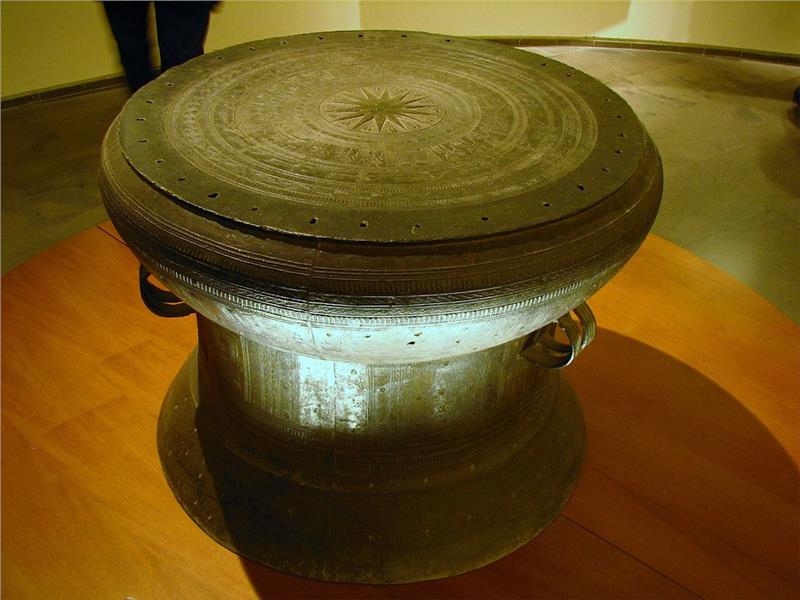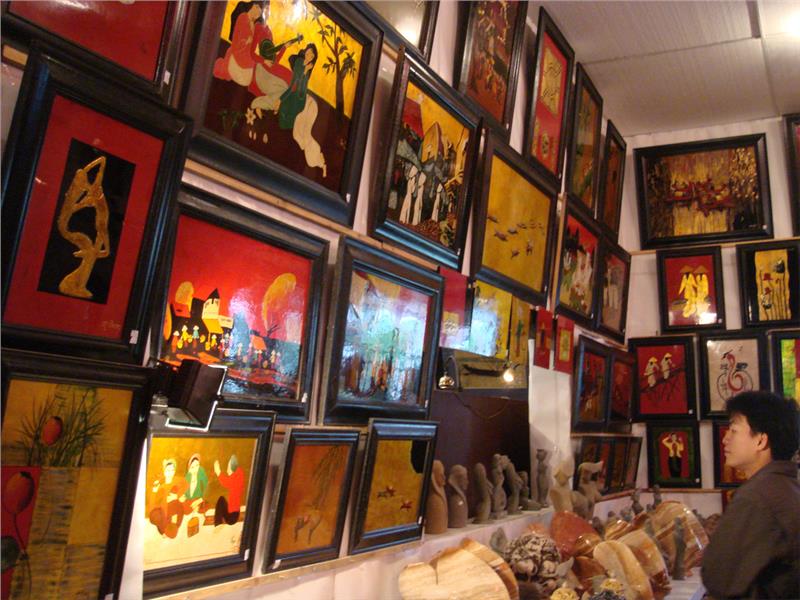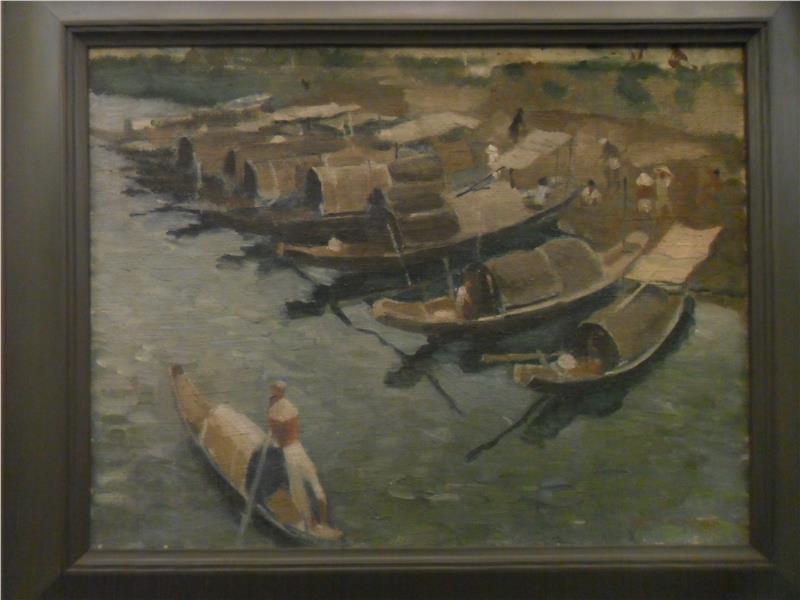Fine Arts is one of art forms owning the oldest history. It is considered a means not only reflecting the world, but expressing thoughts and feelings of the human. Fine Art includes three basic types including sculpture, painting, and architecture. Nowadays, it gradually expands and sets its presence in all areas of life with limitless materials, means and modes of expression. Just like Vietnamese history, Vietnam Fine Arts has seen much ups and downs, following the interval of peace and wars that rule the country for the past two millennia. Accordingly, Dong Son Culture witnessed a masterpiece of decorative art with Ngoc Lu bronze drum. It is one of the biggest, most typical, and most beautiful of Dong Son bronze drums. Patterns possessed stylized features, beautiful and unique characteristics. It becomes a typical art masterpiece opening for the nation’s Fine Arts and Vietnamese cultural history. Ngoc Lu bronze drum symbolized for both Vietnamese culture and famous Dong Son civilization.

Subsequently, with thousand years of Chinese domination from 111 BC to 938 AD, Vietnamese Fine Arts undoubtedly absorbed many Chinese influences; therefore, it did not leave much trace of a once-prosperous art scene. However, the nation’s Fine Arts has always retained many distinctively Vietnamese characteristics. Not until the late 10th century with the enthronement of Le Dai Hanh was Vietnam Fine Arts partly restored. Then Ly - Tran - Ho Dynasty from the 11th to the early 15th Century was a gold era for the development of Fine Arts in Vietnam. Architecture influenced by Buddhism such as One Pillar Pagoda in Hanoi, crafted with dragon phoenix contour, is typical during this period. As well, folk painting throve and shone for peasants were able to produce surplus during the peace and had extra time for creative their works. This period of arts apex lasted only 400 years, before the country was once again divided and torn by political instability.

By the 19th century, the influence of French Arts took hold in Vietnam, having a large hand in the birth of modern Vietnam Fine Arts. It is considered that the history of modern Vietnam Fine Arts had began when the French colonialists established the “Fine Arts College of Indochine” (FACI) nowadays known as the Vietnam University of Fine Arts (42 Yet Kieu, Hanoi) which exclusively opened for the three Indochinese countries, namely Vietnam, Laos and Cambodia following an all around European training method.
In 1945, Communist Party of Vietnam (Viet Minh) led a general resistance against French invaders in order to gain the independence for the country. A few Vietnamese intellectuals including artists such as To Ngoc Van, Tran Van Can, Phan Ke An, Luong Xuan Nhi, Nguyen Do Cung followed the resistance formed a new group and detached themselves from the original group of famous artists remaining in some big cities such as Nguyen Gia Tri, Mai Trung Thu, Le Pho, Le Ba Dang, and Le Thi Luu.

The year 1954 was marked by Dien Bien Phu Victory and Vietnam was temporarily divided into two regions; of which, North Vietnam undertook the establishment of a socialist system and in the South, the first Republic of South Vietnam was established. In accordance with the Geneva Agreement’s consents, many intellectuals regrouped in the North and South. This event caused a tragic separation of Vietnam Fine Arts. In North of Vietnam, Nguyen Sang, Luu Cong Nhan, Bui Xuan Phai, Nguyen Tu Nghiem, Duong Bich Lien and several young generation artists developed their unique characters and art works; meanwhile in the South, Nguyen Trung, Nguyen Khai, Nguyen Lam, Nhieu De, Dinh Cuong, Nguyen Phuoc with their intentions and efforts towards innovation has made a first step to individual creative works.
In 1975, when the war ended, Vietnam became a unified country. However, there were no great changes in Vietnamese Fine Arts for the next 15 years as a result of clear distinction of Northern and Southern art cultures in Vietnam. In the mid-1990′s, there appeared great changes in the Fine Arts. A new wave of artists with brilliant creative styles began to embrace modern art and traditional inheritance as their distinctive marks at international exhibitions.
Fundamentally, Vietnam Fine Arts has been bearing the seal of an agricultural tradition, attaching to the community life under the influence of Confucianism. Thus, one can hardly find any new trends or thoughts except those coming from the outside world which have been changed in accordance to Vietnamese life. It’s not to say that contemporary and modern art doesn’t exist in Vietnam but one must admit that it lacks the monumental works clearly showing philosophical uniqueness.
If brief, Vietnam Fine Arts represents a quiet beauty and simplicity of Vietnamese people and Vietnam culture with a long history of wars and economic struggles.
